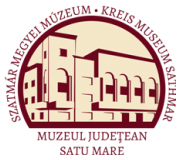Kinces, Diana: Micula. Chid Cultural. Istoric (Satu Mare, 2015)
Micula. Cultural - historical guide - The history of the village
Micula. Cultural - historical guide The village of Micula is located in the northern area of Satu Mare county and it is made of three villages: Micula, Micula Nouă and Bereu Nou, at a distance of 13 km from Satu Mare on the road DJ18, but it can also be accessed by the railway. The administrative territory of the village extends up to North to the border with Ukraine. Micula is an administrative area of medium size with 3659 inhabitants, of which 36.02% are Hungarians, 32.25% Romanians, 15.85% Ukrainian and 8.66% Gypsies, the area being known as the largest Ukrainian community in the county of Satu Mare. From the religious point of view, there is not a main religion, the inhabitants are Orthodox (24.65%), Pentecostal (20.47%), Protestants (18.2%), Roman Catholics (15.52%), Greek Catholics (8.06%) and the Seventh Day Adventist (3.77%). Due to the fact that it is the largest area of Ukrainians from Satu Mare, the research from the project The institutional interactive cooperation. History traditions and culture without borders mainly focused on highlighting this community. The history of the village The etymology of the village name was derived from the name of Slavic origin Mikola, a version of the name Nicolae.
